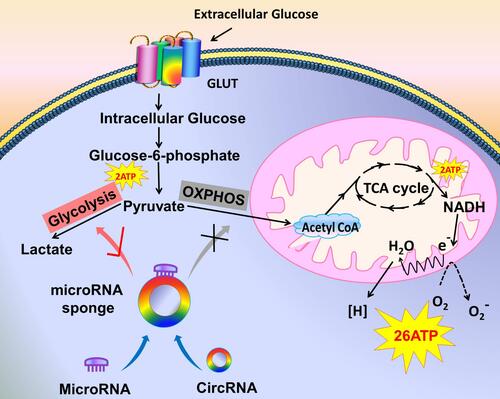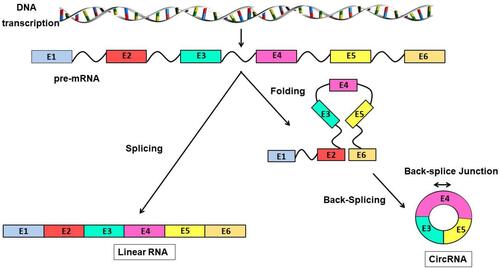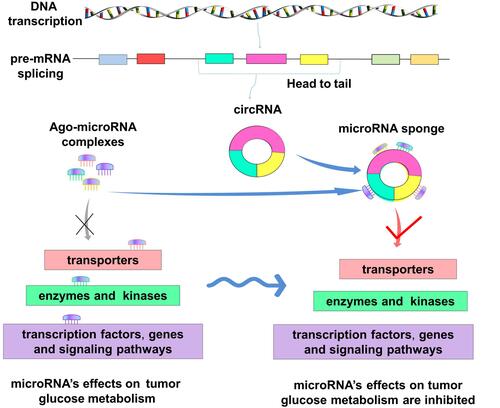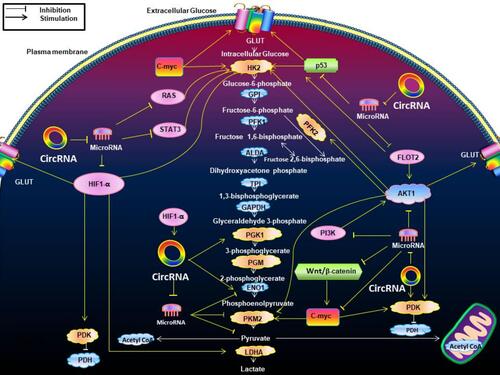Figures & data
Figure 1 Tumor cells choose glycolysis over oxidative phosphorylation. The model shows that the extracellular glucose is transported to the cells by GLUT to become intracellular glucose, which is converted to glucose-6-phosphate under the action of enzymes and then convert to pyruvate, producing 2 ATP in this process. On the right, in the normally oxygenated condition, pyruvate is converted to acetyl-CoA by oxidative phosphorylation. Acetyl-CoA enters the TCA cycle to produce 2 ATP and then re-produces 26 ATP via the electron transport chain. On the left, in tumor cells, some circRNAs are abnormally expressed, and they target microRNAs as molecular sponges. Thus, oxidative phosphorylation cannot be carried out normally. Instead, glycolysis is promoted to produce lactate.

Figure 2 Formation of linear RNA and circRNAs DNA is transcribed into pre-mRNA, which in turn forms linear RNA or circRNAs in different ways. On the left, the pre-mRNA is directly spliced to form linear RNA. On the right, the pre-mRNA, by folding and then splicing end to end, forms a circRNA, which is more stable.

Figure 3 Mechanism of circRNA binding to microRNA. On the left, it shows the regulatory effects of microRNA on tumor glucose metabolism under normal conditions, and the ago-microRNA complexes can bind to transporters, enzymes, transcription factors or genes, signaling pathways and produce regulatory effects. On the right, in tumor cells, abnormal expression of circRNA formed by the head and tail splicing of pre-RNA is observed. The circRNAs bind to the ago-microRNA complexes as molecular sponges, making microRNA unable to bind to transporters, enzymes and kinases, transcription factors, genes and signaling pathways. Thus, the original regulatory effect of microRNA on tumor glucose metabolism is inhibited.

Table 1 CircRNAs in Cancer Glycolysis
Table 2 The Regulatory Mechanism of circRNA
Figure 4 The effects of circRNAs on the Warburg effect-associated signaling pathways. This figure indicates the effects of circRNAs on the Warburg effect-associated signaling pathways. It shows how circRNAs interact with these metabolic pathways by enzymes and transporters associated with the Warburg effect. The majority of circRNAs can antagonize microRNAs to indirectly produce effects. HIF1-α regulates GLUT, HK2, PDK, LDHA. The PI3K/Akt pathway promotes glucose GLUT, HK2, PFK2, pyruvate kinase M2 (PKM2), and PDK. The change of RAS pathway up-regulated HK2. P53 up-regulated GLUT, HK2. The STAT3 pathway promotes HK2. Wnt/β-catenin pathway up-regulates PDK transcription while promoting c-myc. The positive relationships are shown by arrows, and the negative relationships are shown by short dashes.

